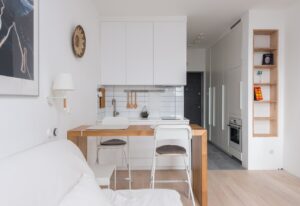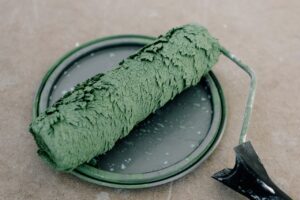
The Dos And Don’ts Of Interior Aesthetic Painting: Tips For Success
Imagine embarking on a journey that turns your living space into a captivating sanctuary, where aesthetics dance in every corner. If you’re a newcomer to this enchanting realm, be prepared to be dazzled. Welcome to a guide that promises to unfurl the secrets to triumph in your artistic pursuit of interior painting. Behold the transformative power that lies in the art of choosing colors and wielding them with mastery. Each stroke of pigment has the potential to orchestrate a symphony of visual delight within your abode. Delve into the art of selecting hues that resonate with your soul, and master the techniques that breathe life into your walls. Whether it’s the finesse of edging with precision or gracefully concealing baseboards, consider us your artistic mentors. Yet, remember, the canvas’s allure is amplified by the preparation that precedes it. Explore the arcane rituals of priming surfaces, a ritual that lays the foundation for the grandeur to come. Learn the delicate dance of filling imperfections and the gentle caress of sandpaper, transforming roughness into a satin embrace. In this grand overture, we also illuminate the pitfalls to sidestep, ensuring your journey is free of mishaps and frustrations, and brimming with the elegance of a seasoned artist’s touch. So, with roller in hand and canvas protected, let’s embark on a voyage through the enchanting realm of interior aesthetic painting. Unveil the commandments that lead to mastery and avoid the pitfalls that ensnare the uninitiated. Let this be your initiation into a world where walls breathe stories and colors whisper symphonies. The odyssey begins now! Foundational Principles Of Interior Design: Crafting Captivating Spaces Unlocking the secrets to masterful interior design principles is akin to holding the key to crafting visually captivating spaces. Prepare to embark on a journey where color, texture, and lighting play enchanting symphonies, while the dance of furniture placement and room layout choreographs a harmonious tale. Balance: Orchestrating Equilibrium The essence of balance is profound. It orchestrates a symphony of equilibrium, guiding the eye with seamless grace. Within this realm, three balanced archetypes reign supreme: Symmetrical balance is a grand reflection where elements mirror along an imaginary axis, exuding tradition and formality. Asymmetrical balance is a carefree dance of distinct elements, each bearing equal visual weight, ushering in a relaxed, informal elegance. Radial balance is the cosmic arrangement where focal points ignite a spiral of harmonious objects. Proportion: Sculpting Scale And Harmony Proportion, the art of scale, is your sculptor’s chisel. It harmonizes elements within a realm, both in their individual grandeur and in their embrace. When curating your interior canvas: Gauge the size of larger pieces, ensuring they embrace, not engulf, the space. Let dainty ornaments adorn substantial pieces, a delicate interplay of companionship. Celestial heights guide your choice of luminous fixtures and artistic revelations. Color, Texture, And Lighting: Conjuring Emotion Color, a painter’s palette of emotion, infuses spaces with life. It evokes moods and narrates tales, a symphony of hues resonating in harmony: Warm tones—ruby, saffron, gold—embolden spaces with intimacy and warmth. Cool shades—azure, jade—imbue tranquility, the gentle hush of a calm sea. Neutrals—ivory, slate, taupe—embrace all styles, a serene backdrop for creativity’s dance. Texture, A Weaver Of Stories, Adds Layers To Your Narrative: Rough textures intertwine with smooth ones, creating tales of contrast. Soft fabrics converse with rugged materials, birthing dimensions anew. Lighting, the maestro, conducts ambiance with its myriad notes. Attend to both sunlit dawns and artificial constellations: Ambient light—the sun at noon—bathes all in a gentle embrace. Task lights illuminate quests, turning desks into theatres of productivity. Accent lights bestow celestial crowns upon art and architectural gems. Furniture Placement And Room Layout: Choreographing Unity Furniture, like characters on a stage, defines space and story. Its placement shapes flow and resonance, welcoming guests to a carefully curated performance: Bow to the focal point, let furnishings sing in chorus around it. Spaces to breathe—a waltz of comfort—between each entity. Traffic’s artful flow informs the placement, where movement is a ballet. The Essential Dos And Don’ts Of Interior Aesthetic Painting The canvas of your home holds endless possibilities, waiting to be painted with the strokes of creativity and the hues of your imagination. The world of interior aesthetic painting is a realm where walls become the storytellers, colors transform emotions, and textures evoke sensations. To embark on this artistic journey with finesse and confidence, it’s crucial to understand the guiding principles that can make or break your masterpiece. In this article, we delve into the dos and don’ts of interior aesthetic painting, illuminating the path to creating captivating and harmonious spaces. The Do’s: Crafting Brilliance 1. Choose High-Quality Paints: The foundation of any artistic endeavor rests upon the quality of your tools. Opt for high-quality paints from reputable brands. These paints not only offer a wide spectrum of colors but also provide better coverage and durability, ensuring that your masterpiece stands the test of time. 2. Preparation Is Key: Before the first stroke of color graces the surface, meticulous preparation is essential. Clean your walls to remove dust and grime, ensuring a smooth canvas. Repair imperfections like cracks and holes using spackle or drywall compound. A well-prepared surface guarantees that your paint adheres flawlessly, resulting in a visually pleasing finish. 3. Primer, The Silent Ally: The unsung hero of the painting world, primer is a must in certain situations. It creates an even base coat, enhances paint adhesion, and intensifies color vibrancy. Apply primer when transitioning between dark and light colors, or when painting on bare wood or new drywall installations. 4. Harmony Of Color, Texture, And Lighting: The trio of color, texture, and lighting is the symphony that sets the mood. Choose colors that resonate with the ambiance you wish to create – warm tones for coziness, cool hues for tranquility, and neutrals for versatility. Introduce textures that add depth – soft fabrics juxtaposed with rugged surfaces. Lighting, both natural and artificial, is the conductor of ambiance – embrace its variations to orchestrate an enchanting aura. The









